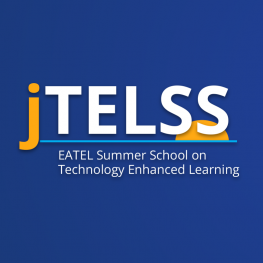Speakers
Theresa Zobel
Hasso Plattner Institute, GermanyStart
06/06/2023 - 16:00
End
06/06/2023 - 17:30
Not every chatbot is a chatbot
Tuesday 06/06 16:00-17:30h
Plenary Hall
Abstract
Chatbots have become increasingly popular in online education and MOOCs. However, not every chatbot is truly a chatbot. Some “chatbots” simply use pre-programmed responses, while others use natural language processing to generate responses based on user input (“intelligent assistants”). In the context of MOOCs, it is important to understand the differences between these two types of chatbots and how they can impact student engagement and learning outcomes. As chatbots continue to be integrated into online education platforms, it is critical to critically evaluate their effectiveness. In addition, chatbot features, such as a smart search or learning buddy, need to be evaluated and ensured that they are used in a way that benefits students and improves the learning experience.
Needs Analysis
The first part workshop is designed to gain a broad understanding of chatbots and their use in education. TEL-participants, regardless of their professional background and prior knowledge, will hear about the potential of chatbots to improve student engagement and learning outcomes. They will learn the differences between scripted and AI-driven chatbots, and the importance of selecting the right type of chatbot for their specific educational goals. The main part of the workshop will consist of a hands-on exercise followed by a discussion session. Participants will practically design different thematic conversational interfaces and describe them in terms of character, features, behavior, message length, language, etc. The goal of the workshop is to provide a comprehensive overview of chatbots in education, covering both theoretical and practical aspects, and to provide participants with the tools they need to make informed decisions about integrating chatbots into online courses.
Learning Objectives
This workshop has the following learning objectives:
- Identify the key differences between chatbots, smart assistants and other conversational interfaces used in MOOCs and online education.
- Analyze the benefits and limitations of using conversational interfaces in online education, and how they can be used to enhance student engagement and learning outcomes.
- Evaluate the design considerations for developing effective conversational interfaces including the chatbot appearance, the chatbot’s name, important functionalities, the length of a conversation and responses.
Pre-activities
There are no technical or knowledge requirements. Optionally, however, participants can think about teaching or university scenarios (with or without the context of chatbots). They can also reflect on their personal (positive or negative) experiences with chatbots.
Session Description
- Warm-up
- Hands-on activity:
– What do you already know about chatbots / conversational user interfaces?
– What are the different types of chatbots / conversational user interfaces?
– What experiences have you had with chatbots or other conversational user interfaces (Alexa, Chat-GPT, customer-service-bot)?
– Does your university have a chatbot for students? - Practical introduction to chatbots.
- Group Exercise:
– Four given chatbot use cases: Food ordering, smart home entertainment, Higher education: Knowledge bot, and Higher education: service bot.
– Design these chatbots in terms of, e.g: functionality, humor, name, contextual knowledge, interface design, language (level, word choice, formality), what not to expect from this type of chatbot - Presentation of the group exercise.
- Discuss the results
- Closing remarks and feedback:
– What did you learn, and what do you think of the automated assessment?
– What open questions still need to be addressed?

